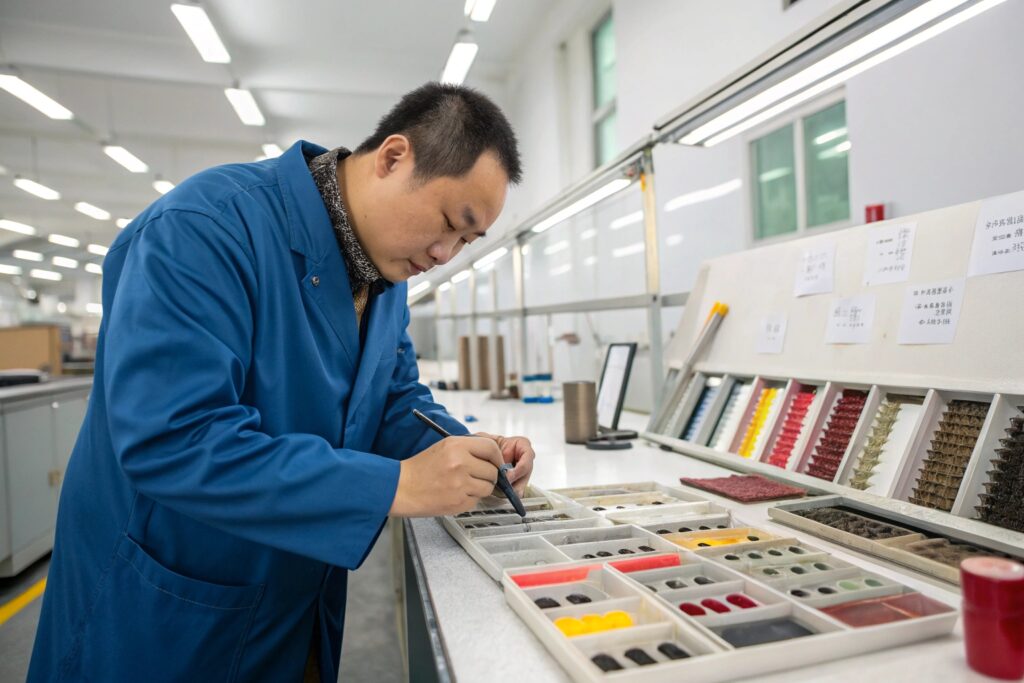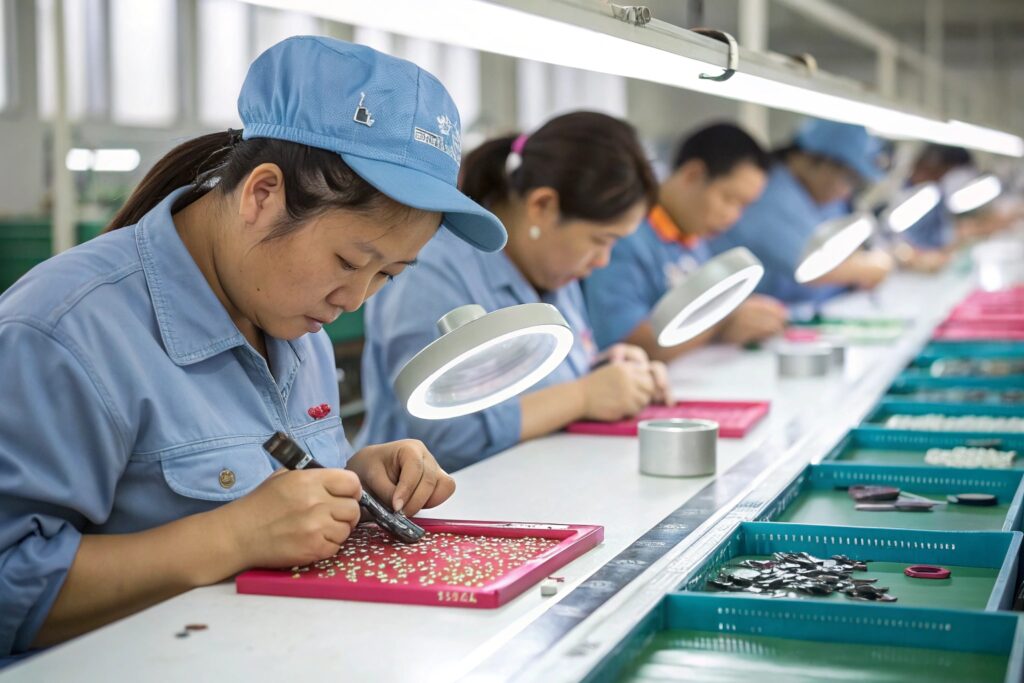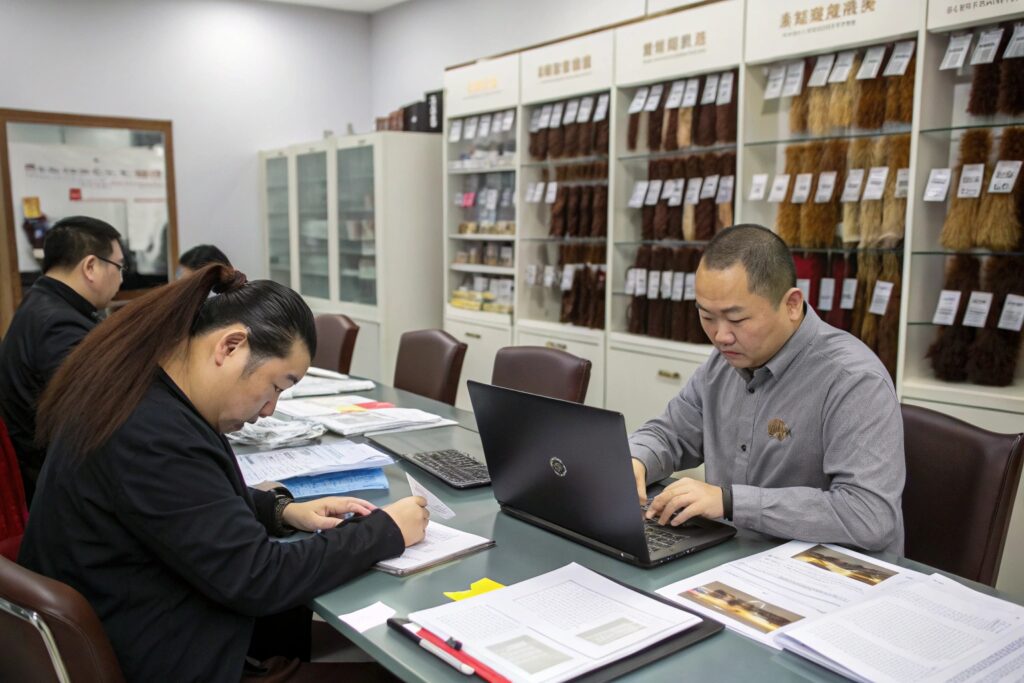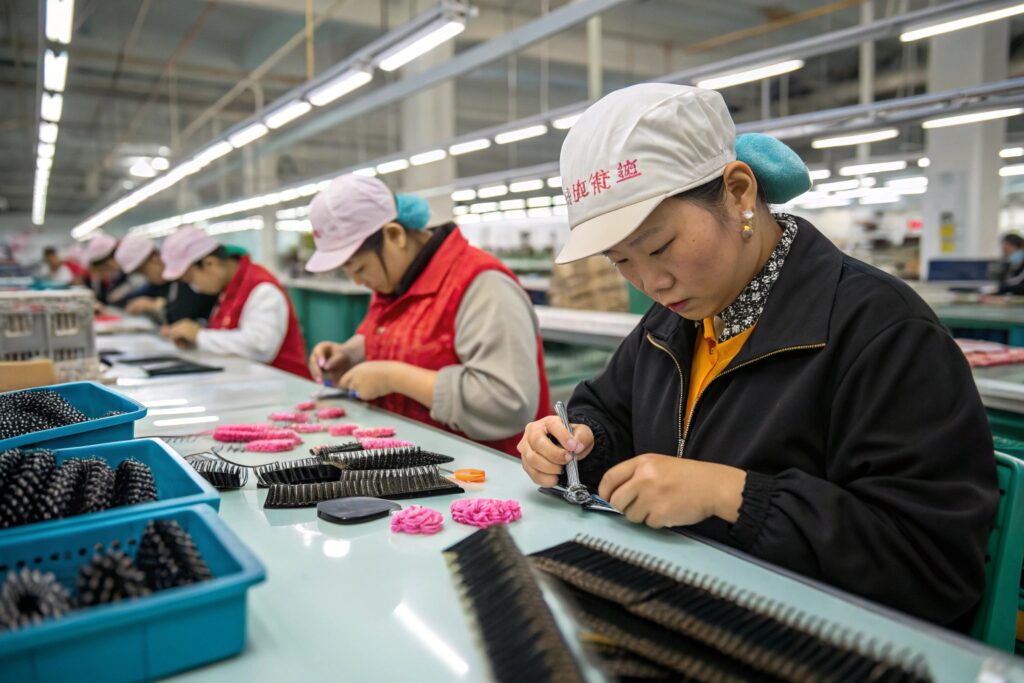In the fast-paced world of fashion accessories, buyers can’t afford to gamble on quality. One faulty shipment of hair clips or barrette pins can damage a brand’s reputation, increase return rates, and delay retail launches. That’s why top-tier buyers prioritize working with manufacturers who have robust quality assurance systems in place from start to finish.
Top hair clip factories implement multi-layered quality control processes covering raw materials, production stages, and pre-shipment checks to ensure consistency and safety. These QA practices help them meet international standards and give global buyers the confidence to reorder.
If you’re a buyer looking for large-scale, consistent orders—whether for supermarkets, fashion brands, or your online store—then understanding these processes can help you select the right manufacturer. Let me walk you through what sets the best hair clip factories apart.
What Are the Raw Material Inspection Standards?
Before the production of a single claw clip or scrunchie begins, top factories begin their QA journey by screening raw materials. From metal springs in claw clips to resin beads in bow pins, everything must pass a rigorous entry check.
Reliable factories test all incoming materials for color accuracy, elasticity, durability, and potential safety hazards before production starts. These early-stage checks eliminate downstream waste and prevent expensive rework.

How Do Factories Ensure Material Safety for Global Standards?
Factories supplying to Europe and the U.S. are required to meet safety benchmarks like REACH compliance and CPSIA standards. This means strict limits on heavy metals, phthalates, and azo dyes. Trusted hair clip factories test plastic and paint batches regularly and partner with accredited third-party labs for documentation.
In addition to chemicals, top factories also test tensile strength. For example, elastic headbands must stretch without snapping, and alligator clip teeth must maintain grip. These tests are usually recorded in a factory’s internal inspection log or quality control sheet.
What Are the Most Common Material Defect Risks?
One common issue is plastic brittleness due to unbalanced polymer blends, especially in cheaper claw clips. Some suppliers also cut corners by mixing virgin and recycled materials inconsistently. That’s why many reputable factories now use ROHS-certified suppliers or require MSDS (Material Safety Data Sheets) for every new raw component. By identifying risk factors early, they improve yield and consistency downstream.
How Is Quality Controlled During Hair Clip Production?
Production lines are where quality can spiral out of control—or be controlled like clockwork. The best hair clip factories integrate in-line QA protocols that catch issues before they compound.
Top factories station quality inspectors at each step of assembly, ensuring that hair clip mechanisms, glue application, symmetry, and size are consistently checked throughout the line.

What In-Line QA Practices Are Used on the Factory Floor?
Factories commonly use the AQL method (Acceptable Quality Limit) for batch sampling. Workers check every 10th or 20th item against product specifications—measuring clip tension, glue application smoothness, or symmetry of decorative pieces like pearls or bows.
Some advanced factories use digital calipers and barcode scan logs to track defects by operator or station. This level of traceability can reduce recurring errors by flagging systemic problems early.
What Happens If Defects Are Found Mid-Production?
If defects appear in clusters—say, claw clips with weak springs—production supervisors pause the line and escalate to engineering teams. Depending on the severity, the batch may be quarantined, reworked, or discarded. This swift action prevents large-scale scrap costs and helps meet lead times.
Factories often keep root cause analysis logs and track each incident with photos. These logs are shared with clients upon request, adding transparency and accountability to the process.
What Final Inspections Are Performed Before Shipping?
Final inspection is the last gatekeeper before the product enters a buyer’s warehouse. At this stage, the stakes are high. No one wants their container held up by customs or flagged for poor workmanship.
Experienced manufacturers perform a 100% inspection on random carton samples, checking function, finish, barcode accuracy, and carton strength before shipment.

How Are Hair Clip Shipments Randomly Inspected?
Factories follow MIL-STD-105E or other statistical models to determine how many units per lot to inspect. A mix of visual inspection (for glue residue, crooked bows, etc.) and functional tests (clip grip, opening angle, elasticity) are done. Barcode and SKU verification is also crucial for large retail chains.
Some buyers prefer to hire a third-party inspection company like SGS, BV, or QIMA. In those cases, our factory cooperates fully, offering inspection space, samples, and access to batch records.
What Are the Criteria for Rejecting a Finished Batch?
Critical defects—like exposed metal causing injury, or products labeled with the wrong brand—are automatic shipment rejects. Major defects, such as misaligned printing or faulty glue lines, must fall under the buyer’s AQL tolerance. Minor defects like small scratch marks may be accepted depending on the contract. To prevent rejections, most top factories have a dedicated pre-shipment QA team cross-check the packing list and physical products.
What Documentation Supports Quality Assurance?
Even the best product won’t pass customs or satisfy a buyer if it’s not backed by clear records. Documentation is the invisible backbone of any serious QA process.
Professional factories maintain detailed quality checklists, test reports, product specs, and photos for each production batch—ready for client audit or customs review.

What Quality Records Do Buyers Usually Require?
Buyers usually request QC checklists with pass/fail metrics, inspection photos, and a copy of the packing list. Some also ask for internal non-conformance reports and batch certifications.
For high-end buyers or branded retail chains, it’s common to require compliance reports or product declarations. This is especially important for children’s hair accessories, where safety rules are stricter.
How Do Top Factories Store and Share QA Documents?
Leading suppliers use cloud-based QA systems to archive all records and link them with each PO or SKU. These systems support instant retrieval, which makes it easier when buyers or customs require quick evidence.
Factories may also include QR codes or barcode-integrated batch numbers on their outer packaging for traceability. This adds trust and simplifies after-sales support when needed.
Conclusion
Quality assurance isn’t just a buzzword—it’s the deciding factor in who wins repeat business. Buyers like Ron aren’t looking for the cheapest quote; they want consistency, transparency, and risk reduction. Whether it’s through material testing, line-side QA checks, or shipping documentation, top hair clip factories know how to protect their clients’ reputation.
If you’re a brand, wholesaler, or accessory chain looking for a factory that won’t let quality slip through the cracks, HairAcc is here to help. With a dedicated QC team, in-house inspection capabilities, and full documentation support, we ensure every hair clip meets your standards—and your customers’ expectations.









